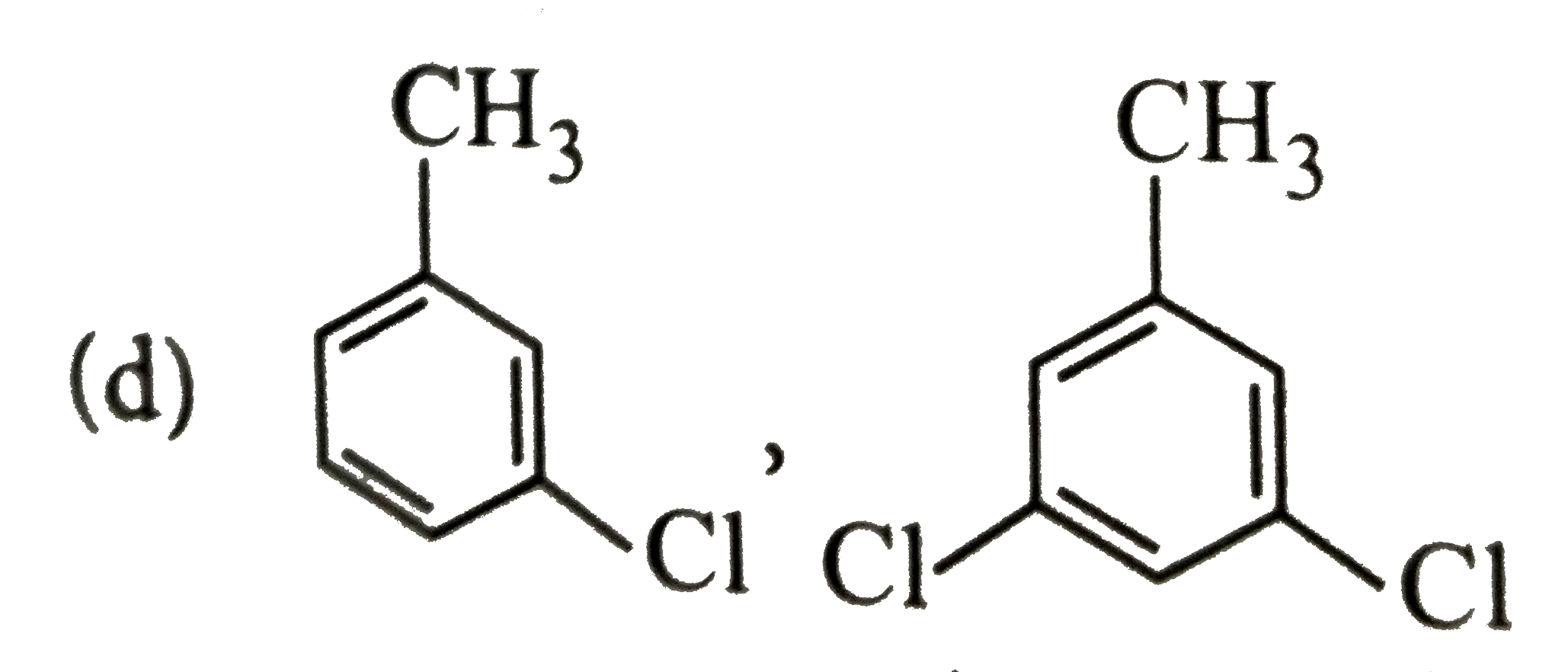Compound 'A' with molecular formula C4H9Br is treated with aq. KOH solution. The rate of this reaction depends upon the concentration of the compound 'A' only. When another optically active isomer 'B' of this compound was treated with aq. KOH solution, the rate of reaction was found to be dependent on concentration of compound and KOH both.
Write down the structural formula of both compounds 'A' and 'B'.
To solve the question, we need to identify the structural formulas of compounds 'A' and 'B' based on the information given about their reactions with aqueous KOH.
1. Identify Compound 'A':
- The molecular formula of compound 'A' is C4H9Br.
- The reaction rate depends only on the concentration of compound 'A', indicating that it undergoes an SN1 reaction. This suggests that compound 'A' is likely a tertiary alkyl halide, which can form a stable carbocation.
- The structure of a tertiary alkyl halide with the formula C4H9Br can be represented as follows:
- The compound can be 2-bromobutane, where the bromine is attached to the second carbon of a butane chain.
- Structural formula:
CH3−C(Br)(CH2CH3)−CH3
2. Identify Compound 'B':
- Compound 'B' is an optically active isomer of compound 'A' and reacts with KOH such that the rate depends on both the concentration of compound 'B' and KOH, indicating that it undergoes an SN2 reaction.
- For compound 'B', we need a structure that is either primary or secondary and has a chiral center to be optically active.
- A suitable structure could be 1-bromobutane, which is a primary alkyl halide and can be represented as follows:
- Structural formula:
CH3−CH2−CH2−CH2Br
- However, to ensure optical activity, we can choose 2-bromobutane (which is a secondary alkyl halide) with a different arrangement:
CH3−C(Br)(CH3)−CH2CH3
- This compound has two different groups attached to the chiral carbon, making it optically active.
Final Structural Formulas:
- Compound A (2-bromobutane):
CH3−C(Br)(CH2CH3)−CH3
- Compound B (2-bromobutane, optically active):
CH3−C(Br)(CH3)−CH2CH3
- The molecular formula of compound 'A' is C4H9Br.
- The reaction rate depends only on the concentration of compound 'A', indicating that it undergoes an SN1 reaction. This suggests that compound 'A' is likely a tertiary alkyl halide, which can form a stable carbocation.
- The structure of a tertiary alkyl halide with the formula C4H9Br can be represented as follows:
- The compound can be 2-bromobutane, where the bromine is attached to the second carbon of a butane chain.
- Structural formula:
CH3−C(Br)(CH2CH3)−CH3
- Compound 'B' is an optically active isomer of compound 'A' and reacts with KOH such that the rate depends on both the concentration of compound 'B' and KOH, indicating that it undergoes an SN2 reaction.
- For compound 'B', we need a structure that is either primary or secondary and has a chiral center to be optically active.
- A suitable structure could be 1-bromobutane, which is a primary alkyl halide and can be represented as follows:
- Structural formula:
CH3−CH2−CH2−CH2Br
- However, to ensure optical activity, we can choose 2-bromobutane (which is a secondary alkyl halide) with a different arrangement:
CH3−C(Br)(CH3)−CH2CH3
- This compound has two different groups attached to the chiral carbon, making it optically active.
- Compound A (2-bromobutane):
CH3−C(Br)(CH2CH3)−CH3
CH3−C(Br)(CH3)−CH2CH3
Topper's Solved these Questions
Similar Questions
Compound 'A' with molecular formula C4H9Br is treated with aq. KOH solution. The rate of this reaction depends upon the the concentration of the compounds 'A' only. When another optically active isomer 'B' of this compound was treated with aq. KOH solution, the rate of reaction was found to be dependent on concentration of compound and KOH both.
(i) Write down the structural formula of both compounds 'A' and 'B'.
(ii) Out of these two compounds, which one will be converted to the product with inverted configuration.
View SolutionCompound 'A' with molecular formula C4H9Br is treated with aq. KOH solution. The rate of this reaction depends upon the the concentration of the compounds 'A' only. When another optically active isomer 'B' of this compound was treated with aq. KOH solution, the rate of reaction was found to be dependent on concentration of compound and KOH both.
(i) Write down the structural formula of both compounds 'A' and 'B'.
(ii) Out of these two compounds, which one will be converted to the product with inverted configuration.
View Solution
Knowledge Check
A compound X with molecular formula C7H8 is treated with Cl2 in presence of FeCl3. Which of the following compounds are formed during the reaction?
A B
B C
C D
D
Which product is formed when tht, compound

is treated with concentrated aqueous KOH solution?A B
B C
C D
D
Which product is formed when tht, compound

is treated with concentrated aqueous KOH solution?A B
B C
C D
D
Compound 'A' with molecular formula C4H9Br is treated with aq. KOH solution. The rate of this reaction depends upon the concentration of the compound 'A' only. When another optically active isomer 'B' of this compound was treated with aq. KOH solution, the rate of reaction was found to be dependent on concentration of compound and KOH both.
Write down the structural formula of both compounds 'A' and 'B'.
View SolutionCompound 'A' with molecular formula C4H9Br is treated with aq. KOH solution. The rate of this reaction depends upon the the concentration of the compounds 'A' only. When another optically active isomer 'B' of this compound was treated with aq. KOH solution, the rate of reaction was found to be dependent on concentration of compound and KOH both.
(i) Write down the structural formula of both compounds 'A' and 'B'.
(ii) Out of these two compounds, which one will be converted to the product with inverted configuration.
View SolutionWhich product is formed when the compound is treated with concentrated aqueous KOH solution ?
View SolutionThe compound that is most reactive with alcoholic KOH is
View SolutionWhich product is formed when tht, compound

is treated with concentrated aqueous KOH solution?
View Solution
